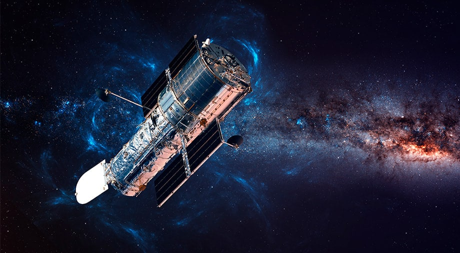Carbon in Earth's organic matter may have originated beyond the Milky Way.
At the beginning of its history, the Universe was composed of a very limited set of chemical elements. It consisted mainly of hydrogen and helium, with a small amount of lithium, which are the three lightest atomic nuclei. Over time, cosmic chemistry became more diverse as stars began to forge new elements in their cores. These elements were also supplied by supernova explosions and neutron star collisions.
Earth's carbon shares a similar "stellar" history — it is the chemical element that forms the basis of all life, making this unique phenomenon difficult to imagine without it. Before arriving on Earth, carbon atoms had to emerge within small stars or during the explosions of more massive ones.
According to a new article in The Astrophysical Journal Letters, at least some of the carbon on Earth has an even more astonishing history. This includes atoms from the biomolecules and cells in our bodies. Astronomers from the US and Canada demonstrated that in galaxies like our Milky Way (which continue to produce new stars), carbon atoms undertake grand journeys.
Within the vast flow of matter — known as the circumgalactic medium — carbon atoms can leave the Milky Way. This medium plays a crucial role in the evolution of galaxies, as it serves as a reservoir of gases that fuel star formation. It contains heavier elements ejected from the galactic disk, including oxygen and carbon. Astronomers refer to these as "metals," distinguishing them from hydrogen and helium.
The circumgalactic medium resembles a massive conveyor belt that first carries matter out of the galaxy and then returns it. Upon returning, under the influence of gravity, it can form various celestial bodies: planets, their moons, asteroids, and comets. It also gives rise to new, igniting stars.

The study was conducted using the Cosmic Origins Spectrograph, which is equipped on the Hubble Space Observatory. The instrument measured how light from nine quasars (extremely bright objects) far from Earth changes as it passes through the circumgalactic medium of 11 galaxies. Both actively star-forming galaxies (including the Milky Way) and passive ones, where star formation has nearly ceased, were examined.
The absorption spectra of the circumgalactic medium in the former showed characteristic lines indicating a large amount of carbon. In some cases, the concentrations of this element extend up to 400,000 light-years, which is four times the diameter of our Galaxy.
It is likely that the slowing down of the circumgalactic medium's movement or the cessation of the galactic "recycling" of matter may explain the gradual decrease in the star population of galaxies. However, as long as this colossal "conveyor belt" continues to operate, it supplies material for the formation of new stars, and they keep being born.